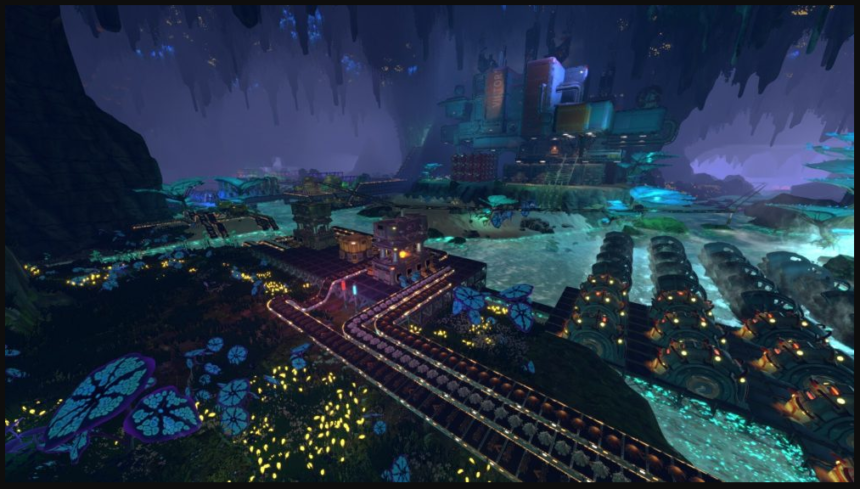Introduction:
In the domain of practical energy arrangements, the Techtonica Water Wheel stands apart as an earth shattering development. Saddling the force of streaming water, this brilliant gadget produces clean power as well as vows to reshape our way of dealing with sustainable power. In the game Techtonica, players get charged with creating and running production lines in an online setting. Resource management is necessary for this, and power is a key element. This is where the water wheel comes in, a tool that perfectly captures the sense of environmental stewardship that infuses the game.
We should dive into the complexities of the Techtonica Water Haggle and its importance as we continue looking for a greener future.
Understanding the Techtonica Water Wheel:
The Techtonica Water Wheel addresses a combination of old standards and current design. At its center lies the idea of using the motor energy of water bodies to deliver power. In Techtonica, the water wheel acts as an efficient generator of electricity as well as an artistic element. This device, which perfectly blends historical ingenuity with modern gaming mechanics, uses the power of water rushing to generate energy. Dissimilar to conventional water wheels, the Techtonica model consolidates state of the art materials and plan components to expand productivity and unwavering quality.
- Hydroelectric water wheel
- Sustainable energy solutions
- Renewable energy innovation
- Clean electricity generation
- Environmental-friendly power generation
How Does the Techtonica Water Wheel Work?
The activity of the Techtonica Water Wheel is carefully straightforward yet surprisingly successful. As water streams over the wheel’s sharp edges, it makes them pivot. Players have to use the Techtonica Water Wheel close to a body of water for it to be effective. Because the water wheel’s efficiency is greatly affected by how close it is to the supply of water, this game needs more careful getting ready. Its right away on the riverbank reduces the need for non-renewable resources by efficiently using the kinetic energy of the water. This rotational movement is then moved to a generator, where it is changed over into electrical power. Whether introduced in streams, streams, or trenches, the water wheel can flawlessly coordinate into different conditions, making it a flexible answer for an environmentally friendly power age.
Benefits of the Techtonica Water Wheel:
Sustainable Asset Usage:
By saddling the force of water flows, the Techtonica Water Wheel takes advantage of an unendingly sustainable power source, lessening dependence on petroleum derivatives and limiting ecological effects. Water wheels also have the benefits of being silent, without a big reservoir or dam, and safe for fish and other animals. Aquatic animals won’t be killed or have their habitat affected by the gently turning blades.
Low Ecological Impression:
In contrast to regular energy age techniques, for example, coal or petroleum gas power plants, the Techtonica Water Wheel creates no hurtful outflows or side-effects, adding to cleaner air and water. A perfect source of sustainable, renewable energy is a water wheel. They don’t pollute the environment and don’t need fuel. Since rivers provide the power source, they need very little cleaning. The clean electricity produced by these wheels is going to run as long as the water is flowing.
Cost-Viability:
When introduced, the functional expenses of the Techtonica Water Wheel are somewhat low, making it a monetarily reasonable choice for both enormous-scope energy tasks and local area level drives.
Insignificant Upkeep:
With strong development and smoothed out plan, the Techtonica Water Wheel requires negligible support, guaranteeing long haul dependability and functional proficiency.
The Future of Sustainable Energy:
As the world wrestles with the difficulties of environmental change and energy progress, developments like the Techtonica Water Wheel offer a beam of trust. Water wheels can produce even more renewable energy in an environmentally friendly way as materials and generator technology advance. Lowering dependence on fossil fuels and optimizing the use of this infinite natural resource might be done by installing more efficient water wheels in suitable rivers and streams around the globe. By bridging nature’s assets as one with the climate, we can prepare for a more manageable future for a long time into the future.
Conclusion:
All in all, the Techtonica Water Wheel addresses a striking jump forward in sustainable power innovation. The way we generate energy in remote areas and developing countries could be completely changed as a result of this green, sustainable strategy. Techtonica’s water wheel is still in its childhood, but it has a lot of promise. With its proficient plan, insignificant ecological effect, and potential for far-reaching reception, it stands ready to alter how we create power. Embracing developments like the Techtonica Water Wheel isn’t simply a decision; it’s a need as we endeavor to construct a cleaner, greener world.






